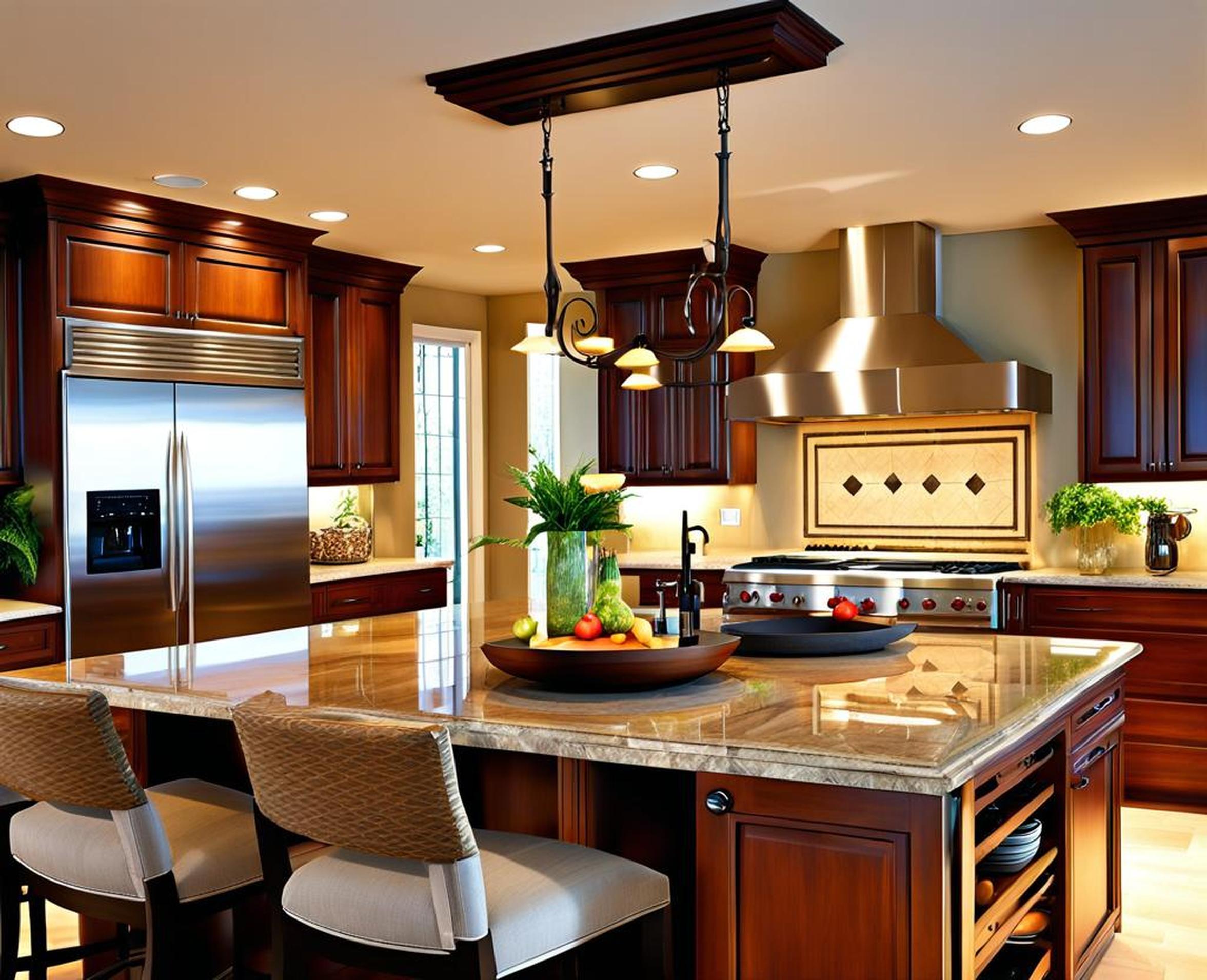Is your kitchen island lacking personality? Do you wish it served more of a function than just extra counter space and seating? By incorporating a contemporary stovetop, you can instantly enhance both the form and function of your kitchen island. Read on to discover the many benefits of adding a built-in cooktop and how to perfectly execute this unique feature.
A kitchen island with an integrated stovetop provides the best of both worlds – extra cooking space and a stylish centerpiece for your kitchen. This versatile setup allows for more flexibility in appliance placement, increased storage, improved ergonomics, and a major style upgrade. Integrated stovetops are having a moment, so now is the perfect time to get on board with this trend.
Stovetop Island Benefits
More Flexibility in Appliance Placement
Installing a stovetop directly into your kitchen island frees up precious counter space around the perimeter of your kitchen. By utilizing the island as an additional cooking zone, you can remove bulky appliances from your countertops. This allows you to streamline your workflow and have more open counters for meal prep.
Islands with built-in cooktops are especially beneficial in smaller kitchens where every inch of counter space counts. The added cooking capacity helps prevent crowding and clutter by keeping appliances off the main kitchen counters.
Increased Storage Options
Unlike standalone cooking appliances, a kitchen island with a stovetop allows you to maximize storage as well. The base of the island can incorporate cabinets, shelves, and drawers to hold cooking equipment, serveware, pantry items, and everything in between. Having items stored right in the island keeps them within arm’s reach while you’re cooking yet tucked neatly out of sight.

Improved Ergonomics
Positioning your primary or backup stovetop in the center island improves overall kitchen ergonomics. Pots, pans, utensils, and ingredients can all be within easy reach no matter which counter you’re prepping on. A centrally located cooktop allows for a more efficient cooking work triangle and easier multitasking.
Enhanced Aesthetic Appeal
Beyond just function, stovetops are increasingly popular for their aesthetic appeal. They allow the island to serve as a major focal point and design statement. The streamlined look of an integrated cooktop adds a contemporary, upscale look. You can customize the island with stylish finishes like statement vent hoods, trendy counters and backsplashes, and unique bases.
Choosing Your Integrated Cooktop
Once you’ve decided to add a stovetop to your kitchen island, it’s time to choose what type of cooktop to install. Fortunately, islands can accommodate most modern stovetop types including gas, electric, and induction.
Cooktop Types
Gas cooktops offer responsive temperature control and high heat output best suited for activities like frying and boiling. Electric cooktops provide a smooth, seamless look that is affordable and easy to clean. For ultimate efficiency, induction cooktops use magnetic technology to heat pans directly, allowing for faster cooking times.
Layout Considerations
To choose the right cooktop size and place it properly, you’ll need to consider your island’s dimensions and kitchen layout. Be sure to allow for proper clearance – 30-36 inches – from other surfaces. Also account for room to walk and move around the island. Proper ventilation like a downdraft system is a must.
Safety First
Always comply with building codes and manufacturer guidelines for a safe installation. Consider added safety features like downdraft systems, induction cooktops, and flame failure switches on gas cooktops. Locate your island a safe distance from sinks and appliances.
Design and Build Process
While doable as a DIY project, installing a kitchen island stovetop requires know-how. Hiring a professional contractor is recommended.
Hiring a Contractor
Look for a contractor experienced in kitchen installation and remodeling. They should be able to pull proper permits, follow codes, and complete electrical, gas, and ventilation work if needed.
Permits and Regulations
Building permits are often required for cooktop installations. Your contractor will know local regulations and can file the proper permits. There may be inspections from the building department at certain project stages.
Step-by-Step Build Process
First, your existing island will need to be partially demolished and prepared for the cooktop. Next comes running gas/electric, ventilation installation, and securing the cooktop in place. Finishing work involves setting countertops and adding safety features.
Stylish Island Design Ideas
A cooktop island also provides the perfect opportunity to upgrade your entire island with chic finishes.
Material Inspiration
Heat and stain resistant countertop materials like quartz and granite complement stovetops beautifully while providing durability. Adding a textured or patterned backsplash and accent lighting take the island to the next level.
Storage Inspiration
Maximize storage with roll-out shelves for pans, a butcher block for extra prep space, and smart organizers to hold spices, utensils and more.
Seating and Shape Inspiration
Curved islands are great for seating and create a unique focal point. Mix up the style with concrete, reclaimed wood, or painted bases with sleek metal legs.
FAQs
How much does it cost to add a stovetop to an existing island?
The costs can range from $1,500-$4,000 depending on cooktop type, needed modifications, materials, and labor.
What are the ventilation requirements for a kitchen island cooktop?
Proper overhead ventilation like a downdraft system is usually required. Always consult local building codes.
Can I use my kitchen island stovetop as my main cooking area?
While convenient, it’s best used as a secondary cook space. Be sure to allow room for food prep and workflow around the island.
What clearances are needed for a kitchen island cooktop?
Allow for at least 30-36 inches of clearance behind and on one side of the cooktop.
Upgrading your kitchen island with an integrated stovetop opens up a world of possibilities. This on-trend feature allows for more efficient cooking, increased storage, and a major style upgrade with the island serving as a contemporary focal point. Bring your kitchen island to life and simplify your cooking by incorporating a built-in cooktop using our tips and inspiration.
